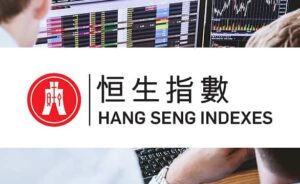Crude oil enthusiasts received an optimistic signal on Thursday as WTI crude futures surged above $79 per barrel, reaching levels not seen in three months. The market’s buoyancy owes itself to the promise of tighter global supply and a resurgence in Chinese demand, underpinned by supportive policies. A remarkable rally of over 10% within the month is the result of voluntary output cuts from both Saudi Arabia and Russia, combined with the willingness of OPEC+ to take further action. The Chinese government, committed to bolstering its economy, also pledged robust policy support, fortifying the outlook for the world’s leading crude oil importer.
One of the primary drivers behind the recent upswing in oil prices is the concerted effort by major oil-producing nations. Saudi Arabia and Russia’s voluntary output cuts have alleviated concerns of oversupply and have injected a bullish sentiment into the market. OPEC+’s openness to implementing additional measures further reinforces the positive outlook for crude oil prices.
Another key catalyst in the equation is the rebounding Chinese demand. With authorities assuring their commitment to bolster the nation’s economy, investors are optimistic about China’s appetite for crude oil. As the world’s largest crude oil importer, any signals of enhanced demand from China can significantly impact the global oil market.

However, oil prices did experience a slight hiccup on Wednesday following the US Federal Reserve’s decision to raise interest rates by 25 basis points. This move sparked concerns about overall demand and its potential implications on oil consumption. While the US economy remains robust, the rate hike has introduced an element of uncertainty, prompting investors to assess its impact on crude oil prices.
The European Central Bank’s upcoming move to tighten its policy and the signals of potential rate increases to address the ongoing inflationary pressures have definitely raised concerns among market participants. This has added an element of uncertainty and apprehension in the financial markets. It’s essential to recognize that such policy adjustments can trigger a chain reaction in the market dynamics, leading to shifts in investor sentiment.
As we know, investor sentiment plays a significant role in shaping the behavior of financial markets. If investors perceive the central bank’s actions as being too aggressive or not adequately addressing the inflationary challenges, it could result in heightened volatility and potential disruptions in various asset classes, including crude oil prices.
The interconnectedness of the global financial system means that policy changes in one region can reverberate across different markets and sectors. As such, keeping a close eye on the European Central Bank’s decisions and their potential impact on investor behavior and market movements is crucial for anyone involved in the oil market.
Navigating through these uncertain times requires a keen understanding of macroeconomic factors and policy dynamics. As we move forward, being vigilant and staying informed about the actions of central banks and their implications will be key to making well-informed decisions in the ever-changing landscape of the crude oil market.
As a seasoned financial writer and industry expert, I would strongly recommend investors to maintain a close and vigilant watch on three critical factors that can significantly impact crude oil prices: global oil supply, Chinese economic policies, and central bank actions.
The first aspect, global oil supply, is a crucial determinant of oil prices. Keep an eye on the production decisions and output levels of major oil-producing countries, especially Saudi Arabia and Russia, as their voluntary output cuts have shown a substantial impact on prices in the past. Additionally, pay attention to OPEC+’s willingness to implement further measures, as it can affect the supply-demand balance. Crude oil signal
Next, Chinese economic policies play a pivotal role in influencing crude oil prices due to China’s status as the world’s leading crude oil importer. Monitor any policy changes or economic indicators coming from Chinese authorities that might signal shifts in their energy consumption and demand for oil.
In conclusion, the crude oil signal is currently a mix of positive and cautious indicators. The tightening global supply, coupled with the rebounding Chinese demand, has propelled oil prices to a three-month high. However, the recent interest rate hike by the US Federal Reserve and the expected tightening of policy by the European Central Bank introduces uncertainties that may impact overall demand. As an expert in the financial realm, it is crucial to stay vigilant and remain adaptable to market shifts. Keeping a close eye on the key drivers and being well-informed will enable investors to successfully navigate the dynamic crude oil market.
Source: tradingeconomics.com





